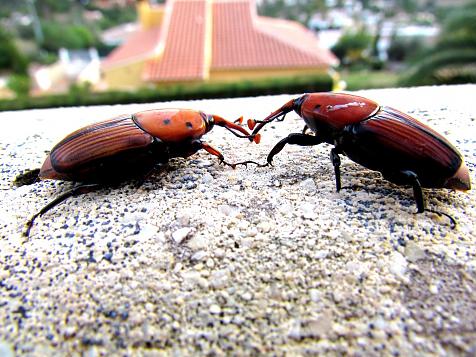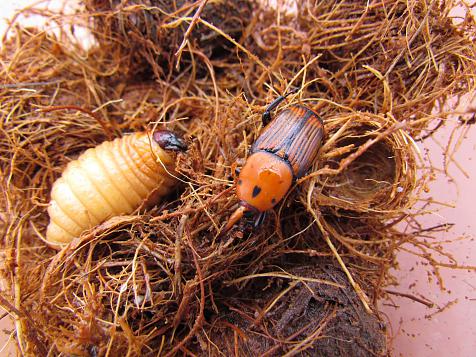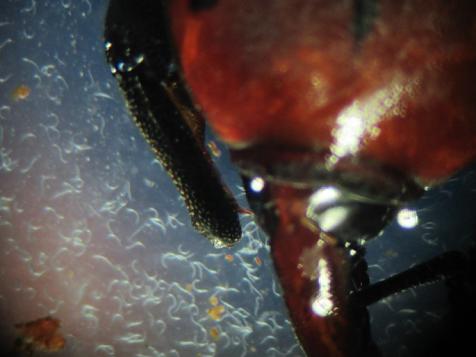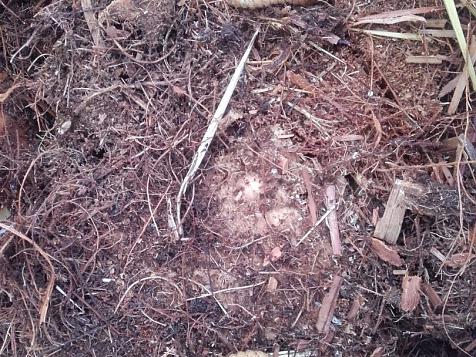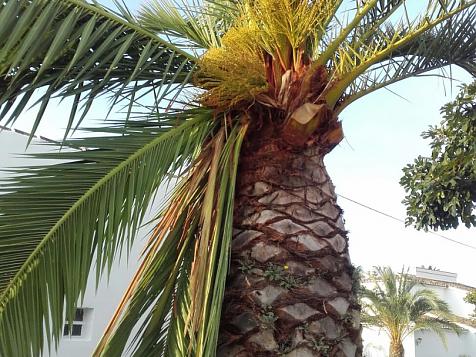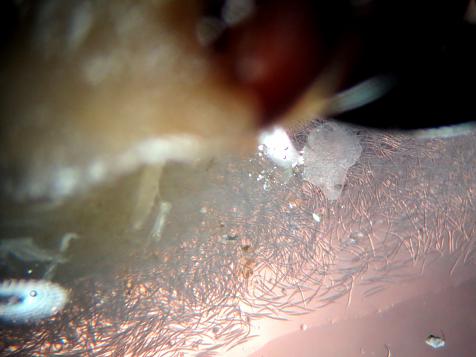The red palm weevil
BackThe Red Palm Weevil (Rhynchophorus ferrugineus) is a species of beetle native to tropical Asia.
The Red Palm Weevil (Rhynchophorus ferrugineus) is a species of beetle native to tropical Asia.
Spain was the first European country where this insect came in 1993, specifically in Granada, through infected Palms from Egypt and other North African countries. Since then it has been spreading to other European countries progressively. From 2006 its worldwide expansion accelerates, reaching in 2010 the State of California (USA).
Its life cycle has 4 stages (egg, larva, pupa and adult insect), and it is completed in approximately 200 days. The egg is cylindrical, whitish and ranging from 1 to 2.5 mm. It hatches at 3 days. The larva lives around 90 days and grows from 2 mm to 5 cm. The larva feeds on soft internal tissue of the Palm tree, so it ends up killing the palm tree. Inside the pupa, the larva undergoes its transformation to insect in 15-30 days. An adult weevil has a life of between 45-90 days. An adult female may put more than 200 eggs, these are often placed isolated and hidden behind Palm tree tissues.
Males differ from females by a few "whiskers" or silks in its front trunk.
The palm trees usually attacked by the red palm weevil are Phoenix genus, specially Phoenix canariensis (Canary Island Palm tree) and Phoenix dactylifera (Date palm). Canary palms are red weevil favourites, especially the male Canary Islands measuring between 3-4 m height. The Phoenix dactylifera are highly susceptible at its base.
Other palms which are also affected are Cocos nucifera and Elaeis guineensis. In some cases, Washingtonia, Trachicarpus fortuneii, and Chamaerops humilis were affected too.
Biological solution:
- Application of insect pathogenic nematodes, which kill the larvae and adult red palm weevil without causing further damage to man or palm.
- A treatment with Natusys to improve the condition of the palm tree.
- Pheromone traps are a preventive method to trap a lot of adults.

